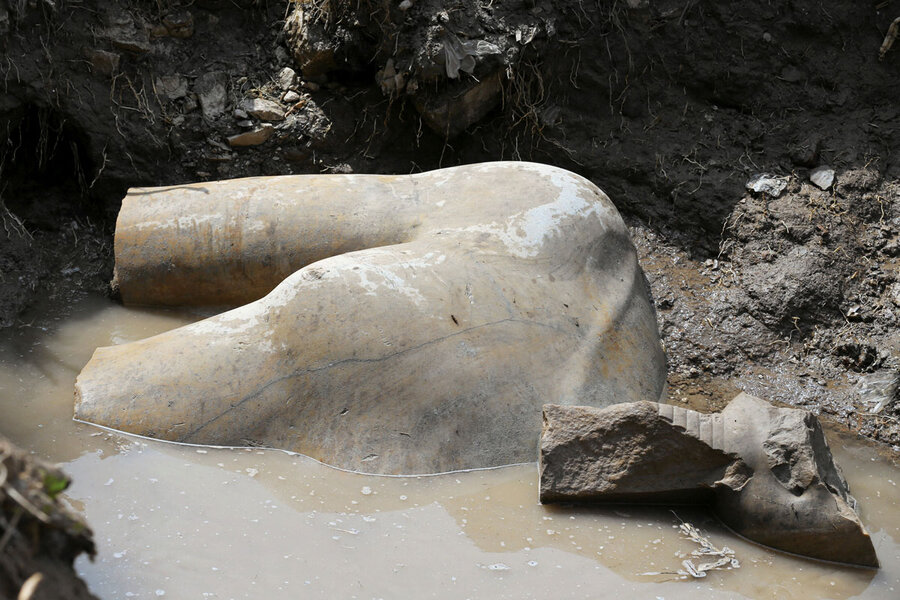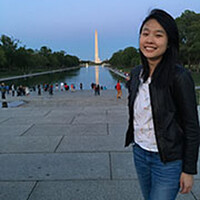Buried treasure: huge statue of Egyptian king unearthed in Cairo neighborhood
Loading...
A team of Egyptian and German archaeologists has discovered a towering 26-foot statue in a Cairo slum, a presumed depiction of Pharaoh Ramses II, Reuters reports on Thursday.
The colossus found submerged in mud in where the ancient city of Heliopolis once stood is “one of the most important discoveries ever,” according to the Egyptian Antiquities Ministry.
The massive quartzite figure is "most probably Ramses II," Antiquities Minister Khaled al-Anani told Reuters on Thursday at the site of the statue's unveiling, adding that the identity would have to be later confirmed once more of the statue is uncovered.
“On the discovered portions there is no inscription found that would make it possible to determine which king it is,” Mr. Anani explained in a Facebook post on Thursday. “But its discovery in front of the gate of the temple of Pharaoh Ramses II suggests that it is likely him.
In addition to the larger-than-life statue researchers also found a life-sized limestone statue of Pharaoh Seti II, Ramses II’s grandson.
Ramses II, also known as Ramses the Great, ruled more than 3,000 years ago in the 19th Dynasty. He is considered by historians to have been the most powerful and revered leader of ancient Egypt. Heading several military expeditions, he expanded the Egyptian Empire, stretching from Syria in the east to Nubia (today’s northern Sudan) in the south.
The area where the two statues were uncovered is currently the working-class neighborhood Matariya, located in the eastern part of modern-day Cairo. But in Ramses' day it was Heliopolis, believed to be the home of the Egyptian sun god Ra and the birthplace of the world, Aymen Ashmawy, the head of the Egyptian team on the dig, said.
"The sun god created the world in Heliopolis, in Matariya," Dietrich Raue, head of the expedition's German team, told Reuters. "That's what I always tell the people here when they say is there anything important."
Monumental statues, temples, and obelisks were all built in Matariya, but kings never lived there because of the area’s ceremonial meaning, according to Dr. Raue.
Though Heliopolis was mostly destroyed during Greco-Roman times, with many of its temples and obelisks moved to Alexandria or to Europe, the researchers have been working in the ancient city for more than a decade under difficult conditions, according to the American Research Center in Egypt.
The team will now attempt to extract the remaining pieces of both statutes and restore them. The colossus, if successfully restored and proven to be of Ramses II, will be placed at the entrance of the Grand Egyptian Museum in Cairo, opening in 2018. Such a decision follows a 1983 law that mandates all artifacts uncovered on national territory the property of the state, as The Christian Science Monitor reported in November.
The northern African country has found itself caught in several scandals over preserving antiquities in recent years. An estimated $3 billion of antiquities were stolen during post-2011 political instability, while eight museum employees were charged with negligence in their problematic handling of King Tutankhamun’s mask last year. A Chinese tourist’s graffiti on one of Egypt’s grandest Pharaonic temples has also put the state’s ambivalent preservation efforts under scrutiny, as the Monitor’s Dan Murphy noted in 2013.
Amid the threats the Egyptian cultural sites face from looting, “space archaeologist” Sarah Parcak developed a citizen science platform in February 2016 to recruit the public to help map uncatalouged archaeological sites in the Middle East.
“The reality is we are losing the battle against looting,” she said at the time, according to National Geographic. "By creating a 21st-century army of global explorers, we'll find and protect the world's hidden heritage, which contains humankind's collective resilience and creativity.”
This report includes material from Reuters.








